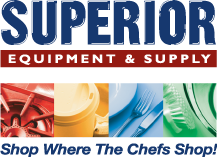
There are many occasions when home-cooked meals just don't cut it and dining out at a restaurant just isn't feasible. Weddings, parties, meetings, conferences, luncheons and holiday gatherings are just some examples of get-togethers that require more than what you can whip up in your kitchen but wouldn't work in a restaurant setting. On these occasions, restaurant catering is a great option. Customers get the high-quality food they expect while being able to control their environment.
If your restaurant doesn't have a catering operation set up, you could be missing out on some lucrative business and customers to competitors. If you're interested in getting started in the catering business by revamping your food service equipment, here are some tips to help you out.
Dedicate a go-to catering expert: Your first mission is to appoint a catering expert to handle this side of the business. This person should have experience with the catering industry and know what it takes to successfully serve large groups of people in various settings. This person should be skilled in party scheduling, event planning, portioning, group pricing, discounting, menu variation and answering any catering questions. When you're just starting, it's OK if this person also handles other tasks that aren't related to the catering side of things.
Decide on a menu: The next step is to sit down and plan out a catering menu. It can be as simple as you like or more complex. You can even offer extras like vegetarian or vegan options, or gluten-free foods to ensure that there's always something for everyone. Typically, plated meals, buffets or food stations are the norm in catering operations, so decide now what kind of setup you want to offer your customers. Keep in mind that many of your regular restaurant offerings may not hold up in certain conditions, so consider things like temperature, storage, supply and the restaurant equipment you'll need when you're choosing what to offer.
Nail down prices: To get a good idea of what you should charge for the foods you decide to offer, look around at what other restaurants and grocery stores in your area are charging for similar items. Don't forget that there may be other fees involved that you'll need to account for, like transportation fees, serving fees, delivery fees or cleanup fees. You may want to consider offering several packages that include some or all of these services.

